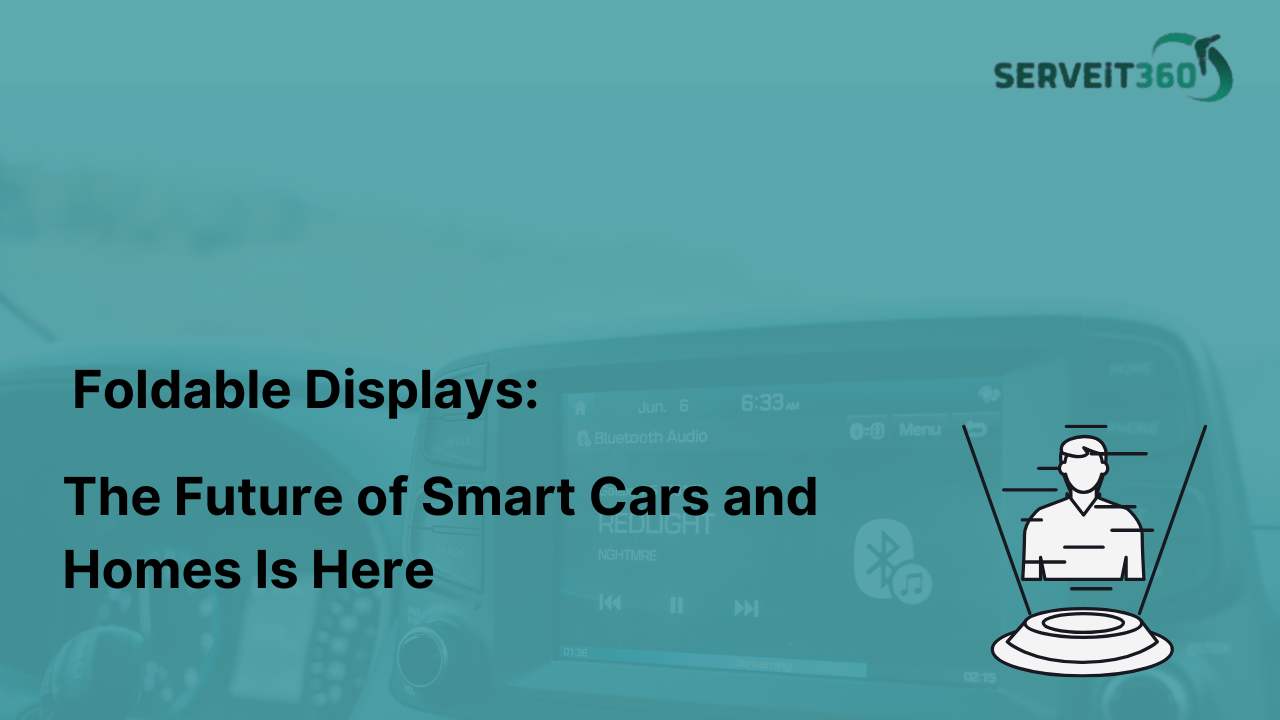Imagine stepping into your car, and instead of a cluttered dashboard filled with buttons, a sleek, flexible screen smoothly unfolds, adjusting to your driving needs. Or picture your TV rolling away into a sleek console when you’re done watching, leaving your living space clean and minimal.
Sounds like something out of a sci-fi movie, right? Well, this isn’t the future—it’s already happening. Foldable and rollable display technology is set to redefine how we experience cars, homes, and even public spaces. Let’s dive into what’s coming and why it’s so exciting.
Foldable Displays in Cars: The Cockpit of the Future
The automotive industry is undergoing a massive transformation. Traditional car interiors—filled with bulky buttons, knobs, and fixed infotainment screens—are making way for sleek, adaptive, and flexible displays that seamlessly integrate with modern vehicle designs.
With the rise of electric vehicles (EVs) and autonomous driving, screens are becoming the primary interface between drivers, passengers, and their cars. The next step? Foldable, rollable, and shape-shifting displays that transform the driving experience.
1. Say Goodbye to Static Dashboards
Think about how much space a traditional dashboard takes up. Now imagine if that entire surface could turn into a smooth, customizable screen that only appears when you need it.
How it works:
- Your dashboard is embedded with a flexible OLED or microLED display.
- When you start the car, the screen unfolds to reveal controls, navigation, and entertainment.
- When you park, it folds away, giving your car a clean, minimalist look.
Major car manufacturers like BMW, Mercedes-Benz, and Tesla are already testing curved, retractable, and rollable dashboard displays to provide a more immersive and futuristic driving experience.
Why it matters:
- Less clutter, more functionality – You get an all-in-one screen without extra buttons.
- Better safety – Augmented reality (AR) navigation can project directions directly onto your windshield.
- More customization – Switch between display modes based on your driving needs.
2. Rollable Screens for Passenger Entertainment
Infotainment screens in cars are getting an upgrade too. Instead of having fixed screens mounted on the back of seats, rollable OLED displays can extend from the roof or side panels, offering an on-demand entertainment experience.
Real-life scenario:
Imagine you’re on a road trip, and your kids in the back seat want to watch a movie. With a tap, a screen unrolls from the ceiling, plays their favorite animation, and then neatly disappears when they’re done. No bulky monitors, no unnecessary space taken up—just seamless innovation.
Tech already in progress:
- LG’s rollable OLED technology could be integrated into luxury car models.
- Hyundai & Kia are testing transparent and flexible displays for future vehicles.
- Sony & Honda’s new EV concept features a wraparound screen for passengers.
Why it matters:
- More space-efficient – Screens appear only when needed.
- Better aesthetics – Say goodbye to permanent, clunky rear-seat screens.
- Enhanced entertainment – Interactive, touch-sensitive displays allow passengers to control content and even browse the web.
Smart Homes: Where Screens Disappear When You Don’t Need Them
Now, let’s move from cars to our homes. The way we interact with technology in our living spaces is changing, and foldable displays are making it smarter, sleeker, and more intuitive.
We’re shifting away from static screens towards dynamic, flexible displays that blend into our environments. Whether it’s a rollable TV, an interactive smart wall, or a transparent kitchen display, foldable screens are revolutionizing home design.
1. Rollable TVs: A Minimalist’s Dream
You know that big black TV screen taking up half your living room wall? What if it could roll away into a sleek console when not in use? That’s exactly what LG’s rollable OLED TV does. One minute it’s a full-sized 4K screen, and the next, it’s gone—blending perfectly into your space.
Real-life scenario:
Picture hosting a dinner party. Instead of a giant screen sitting idle in your living room, your wall transforms into a stunning digital art display or a subtle ambient lighting panel. No more giant black rectangles ruining your decor!
Why it matters:
- Saves space – No need for bulky TV stands or wall mounts.
- Multipurpose usage – Use the screen for entertainment, news, or home automation.
- Aesthetic flexibility – Display artwork, family photos, or a live aquarium view.
2. Interactive Smart Walls: The Next Step in Home Automation
Your walls might soon do a lot more than just hold up your house. With rollable and flexible display panels, you could have:
A touchscreen command center to control lighting, security, and appliances.
A real-time dashboard for your daily schedule, news updates, or even video calls.
A dynamic home aesthetic—one day, your walls could display a mountain view, and the next, an elegant piece of digital art.
Imagine this:
You wake up in the morning, and instead of checking your phone, you glance at your wall. Your schedule, weather forecast, and news updates are displayed right in front of you. You swipe to turn on your favorite playlist and watch as your smart wall adjusts the lighting to match the mood.
Why it matters:
- Fewer separate screens needed – Your wall becomes your display.
- More immersive experiences – Perfect for gaming, entertainment, or work.
- Smarter home control – A single interface for security, lighting, temperature, and more.
Beyond Cars and Homes: The Future of Foldable Displays
Foldable screens aren’t just for personal use—they’re making their way into public and professional spaces too. Here’s where you’ll start seeing them next:
1. Public Transport
Imagine real-time, foldable route displays on buses and trains that adjust based on live traffic updates. No more fixed route maps—just dynamic, AI-powered information screens.
2. Airplanes & Luxury Travel
- First-class cabins may soon feature rollable screens that personalize in-flight entertainment for each passenger.
- Business travelers could set up flexible workstations with foldable displays built into seat dividers.
3. Workspaces & Industrial Use
Factories, offices, and retail spaces will also benefit from foldable displays:
- Retail stores could have digital, flexible price tags and interactive customer screens.
- Factories could use foldable control panels for real-time monitoring of operations.
- Offices could replace traditional monitors with portable, rollable workstation setups.
Are You Ready for the Foldable Future?
From cars that adapt to your driving style to homes that change at the tap of a button, foldable displays are about to transform the way we interact with technology. The best part? This isn’t just a futuristic dream—it’s already happening.
So, what excites you the most? Would you love a rollable TV, a flexible car dashboard, or an interactive smart wall?


